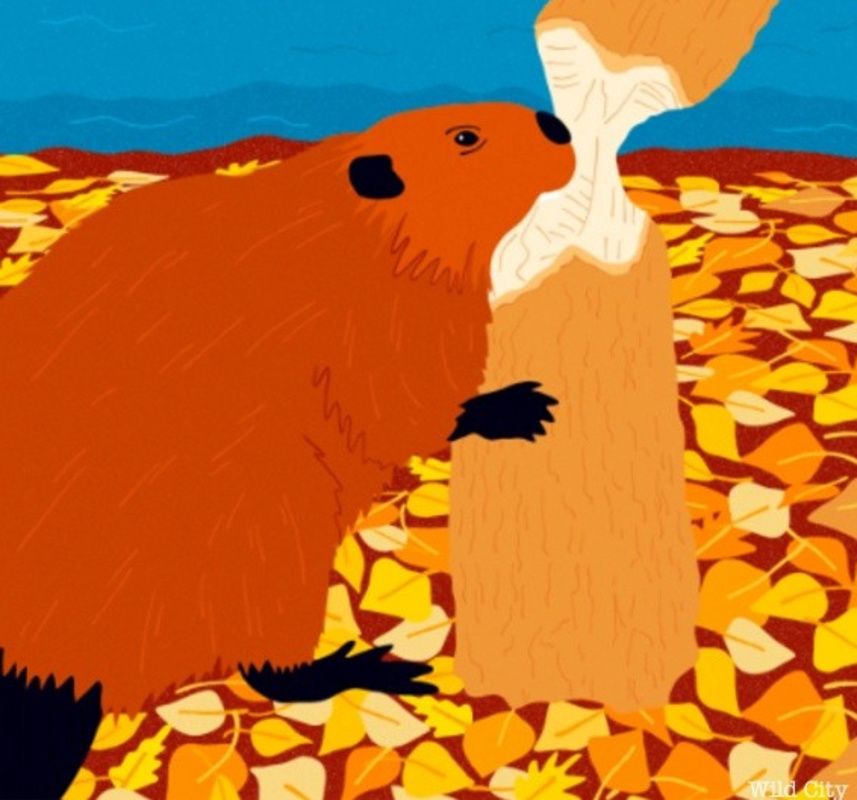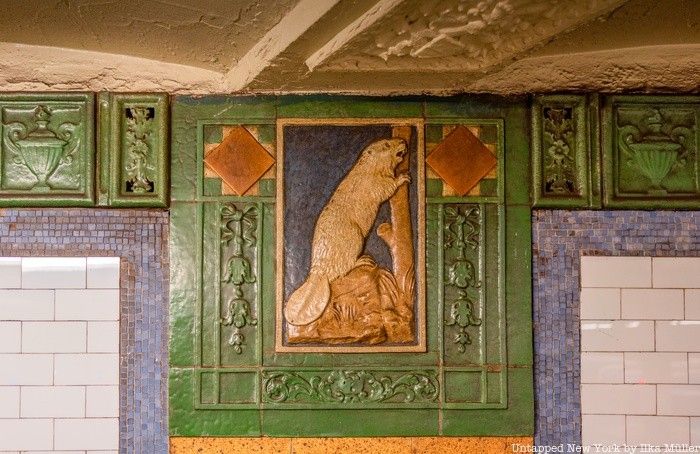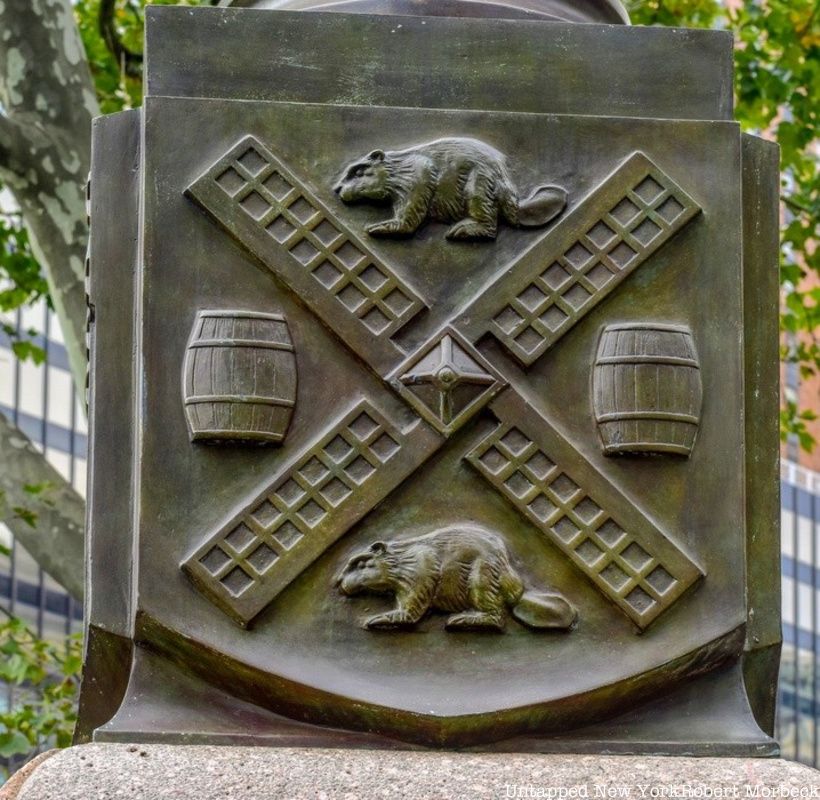After-Hours Tour of the Fraunces Tavern Museum: "Path to Liberty"
Explore a new exhibit inside the oldest building in Manhattan, a witness to history throughout the Revolutionary War Era!


New York City’s iconography is full of beavers. Two tiny beavers adorn New York City’s flag. Beaver Street is one of the city’s oldest thoroughfares. At the Astor Place station on the 6 line, dozens of beavers can be seen carved into the walls. City College’s mascot is Bennie the Beaver. The lumpy little beaver is even the official state animal of New York. What’s probably most surprising, however, is that real-life beavers can actually be seen in New York City – specifically on the Bronx River and usually around sunset – busily paddling around, doing their dam thing. In 2007, a beaver was spotted on the Bronx River. This was the first beaver to live in New York City in over 200 years, and their return signifies a high watermark for the remediation efforts of the Bronx River Alliance.
In Untapped New York’s upcoming virtual talk with author Thomas Hynes, the third in our Wild City series, you can discover the history of the rise, fall, and ultimate comeback of the New York City beaver!

Wild City: The NYC History of Beavers
Tickets to this talk are just $10, or free if you are an Untapped New York Insider! You can gain access to unlimited free virtual events per month and unlock a video archive of 100+ past virtual experiences as an Untapped New York Insider starting at $10/month. Already an Insider? Register here! If you can’t make it live, register for this event and we will send you a link to the recording once it airs!
As the New York City flag and other beaver iconography suggest, these industrious critters were once here in abundance. In fact, beavers are one of the main reasons New York City exists at all. In 1665 the early Dutch settler Adriaen van der Donck, for whom Yonkers is named, wrote, “The beaver is the main foundation and means why or through which this beautiful land was first occupied by people from Europe.” By the late 1600s, according to Science Daily, over 80,000 beaver skins were exported annually from North America. Not surprisingly, this rate of beaver killing was not sustainable. By the early 1800s, the beavers were long gone from New York City, all killed off by trappers.
This loss of local beavers was not just bad for beavers. It was bad for the entire ecosystem. The beaver is a keystone species because a beaver’s dam raises the water level. This water level rise leads to additional plant growth, attracting small insects which serve as food for fish, amphibians, reptiles and birds that in turn serve as food for larger animals.
But the trappers weren’t the only factors working against the beavers in the 1800s. Around this time, the Bronx River, once a haven for wildlife, was facing its own demise. According to Linda Cox of the Bronx River Alliance, the river had become “an open sewer.” Meaning, even if New York City beavers were able to survive the trappers, they wouldn’t necessarily have a suitable habitat.

Change came in 1908 when the Bronx River preservation efforts began in earnest, albeit ineffectively. The initial solution for restoring the river, according to Cox, was to build the Bronx River Parkway alongside it. This included construction of a sewer pipe – instead of using the river as a sewer – and establishment of a green corridor along the river in Westchester County and the northern Bronx. Not surprisingly, however, a highway running parallel to the river did not help the local ecosystem.
In 1974, more effective measures began, spearheaded by Ruth Anderberg and her organization, the Bronx River Restoration. In 2001, this organization gave birth to the current Bronx River Alliance, which Cox calls the “third wave” of remediation efforts.
“The current restoration effort really got rolling then” says Cox. “It reached more deeply into the South Bronx to communities where they never really had an opportunity for involvement with the river. It began to be seen as a resource for the community.”
Cleaning the river, however, was no simple task. Nearly 15,000 car tires alone were pulled out of the river. Teams of volunteers helped remove invasive plant species. Slowly, small signs of progress began to show.

Then the damnedest thing happened. In 2007, a beaver was spotted in the Bronx River, the first in New York City in over 200 years. This first beaver was named Jose, in honor of U.S. Representative Jose Serrano of New York, a champion of the Bronx River’s remediation. Jose even has his own Twitter account! Then two years later, in 2010, a second beaver was spotted. This time the naming was put to a vote, and by an overwhelming majority, the name “Justin” was selected in honor of Canadian singer Justin Bieber. In 2017, a third beaver was spotted near Swindler Cove in Inwood. He was named Sherman, presumably after Sherman Creek Park, where Swindler Cover is located.
Director of Northern Manhattan Parks for the New York Restoration Project Jason Smith says Sherman was first spotted by a local bird watcher and regular park visitor Ben Sadock. “The beaver briefly began building a home on the shoreline of Sherman Creek and spent some time eating the native shrubs in the park but moved on at some point. It is generally assumed that beavers prefer freshwater but I believe there are recently discovered beavers living in brackish intertidal zones. So we hope one will come back- especially if we are able to see more ecological restoration on the Harlem River,” says Smith. In 2019, a beaver was spotted swimming in the Hudson River along the Upper West Side of Manhattan and in 2020 the New York City Parks Department has received tips of beaver sightings on Staten Island.
Paparazzi caught my spring debut 🌸 ✨ https://t.co/fPW0zVBxx7
— José the BX Beaver (@josethebxbeaver) March 31, 2021
According to Cox, Jose and Justin most likely came to New York City by way of Westchester County or Connecticut; a migration pattern similar to those of many millennial humans. “It’s not so amazing that beavers headed here,” says Cox. “It’s more amazing that when they headed here, it worked out.” Cox is also quick to point while two beavers is a small population, it still qualifies as a “thriving” one.
The return of the beaver is just one example of the Bronx River Alliance’s success in remediating the once-blighted river. Fish and birds have returned. An American Mink has even been spotted. As a way to showcase this winding ribbon of returned wildlife, the Bronx River Alliance offers guided canoe tours down the river. They run for a couple of hours, usually on Friday, Saturday and Sunday mornings. Registration runs anywhere between $15 and $35, depending on the length of the tour. (They also offer short Community Paddle canoe trips for beginners and families for free on some Saturdays.)
The Bronx River is 23 miles long. It is the only freshwater river in the City. It begins north of the Bronx in Westchester County and ends in the Long Island Sound.
A beaver has been spotted hanging around Swindler Cove! Our uptown crew named it Sherman. Let us know if you’ve seen Sherman too! #heysherman pic.twitter.com/0c0HEaeKo4
— New York Restoration Project (@NYRP) December 7, 2017
Many of the canoe tours begin in Shoelace Park, amid the hum of traffic from the nearby Bronx River Parkway. Before long, however, the city noises fade as the river approaches the Bronx River Forest, one of the few truly untouched sections of New York. From there, the canoe tours drift through the Botanical Garden and eventually the Bronx Zoo. The longer tours end down in Soundview, by the Concrete Plant Park, which as the name suggests, was once a concrete plant. This new park is testament to the greening Bronx.
It’s a process, however. Only a block away from the new park, and also along the river, are Sal’s Scrap Metals and Casa Redimix Concrete, which is an active concrete plant… The Bronx, after all, is still The Bronx.
To that end, the river is by no means perfectly clean. There are still a few car tires and empty beer cans to be found, as well as a child’s tricycle, which rests near the shore. Throughout the tour, a couple of condoms can also be seen floating in the water, or as they’re affectionately known on the tour: Bronx jellyfish.
Still, for a few miles there in the Bronx, it could be any river in the world, serene and full of life, coursing along on its way. “People sometimes think that natural areas in the Bronx or elsewhere in New York City are pretend natural areas. They’re not really natural areas. This isn’t really a river,” says Cox. “Well, it is real! It really operates like a river. It really has lots of species of fish in it. It has lots of birds along it. It has the beaver, too… Yes, it’s real!”
To be sure, there is no guarantee of seeing a beaver on the canoe tour. Still, the experience of communing with nature, in the middle of the Bronx of all places, is certainly eye-opening.

Wild City: The NYC History of Beavers
Tickets to this talk are just $10, or free if you are an Untapped New York Insider! You can gain access to unlimited free virtual events per month and unlock a video archive of 100+ past virtual experiences as an Untapped New York Insider starting at $10/month. Already an Insider? Register here! If you can’t make it live, register for this event and we will send you a link to the recording once it airs!
Next, read Tibbetts Brook: Raising A Buried Stream in the Bronx, NYC, Cities 101: Uncovering NYC’s Sewer Alligator Legend, Fact or Fiction? and Daily What?! The Monk Parrots of Green-Wood Cemetery in Brooklyn.
Subscribe to our newsletter